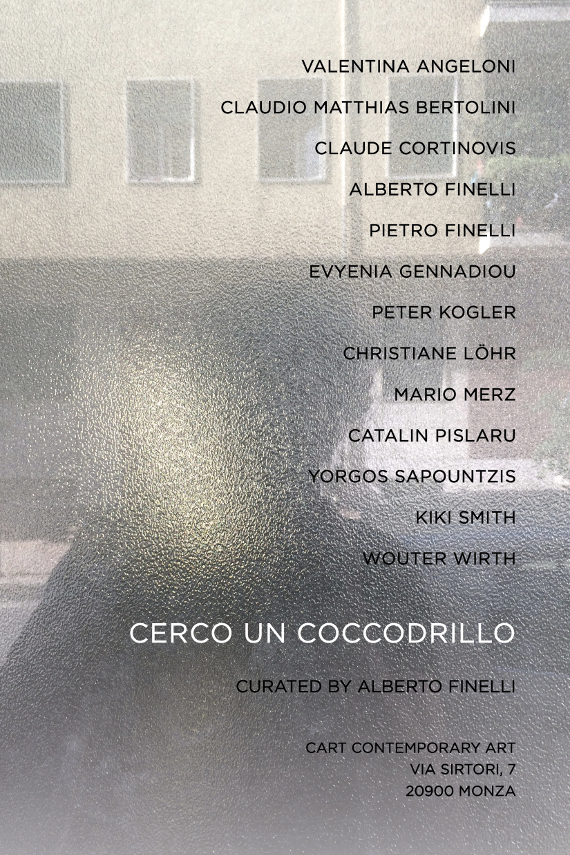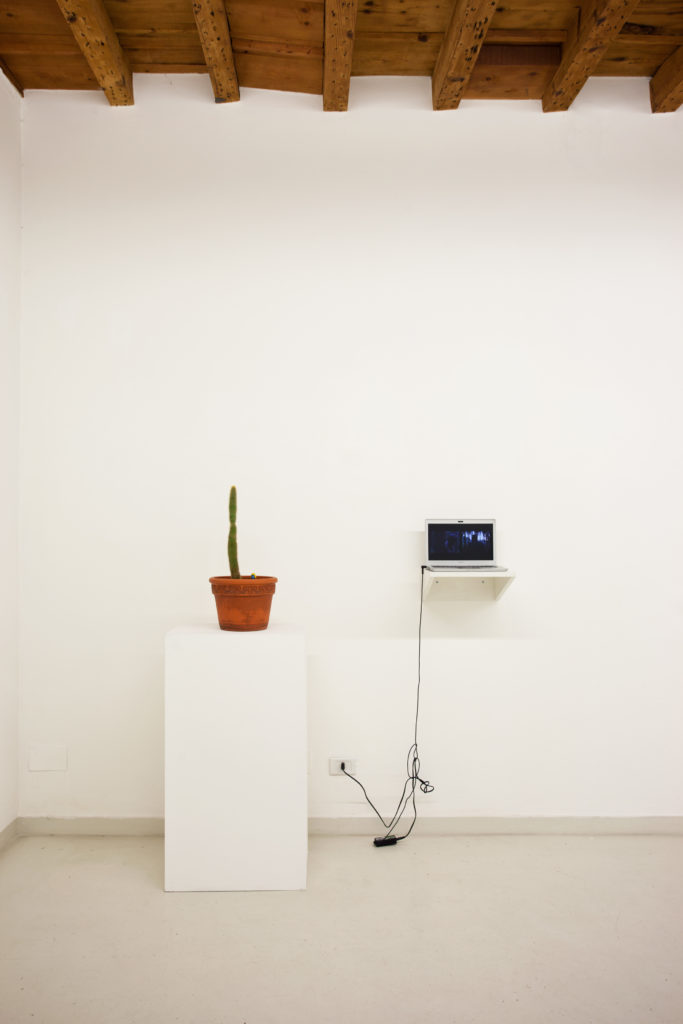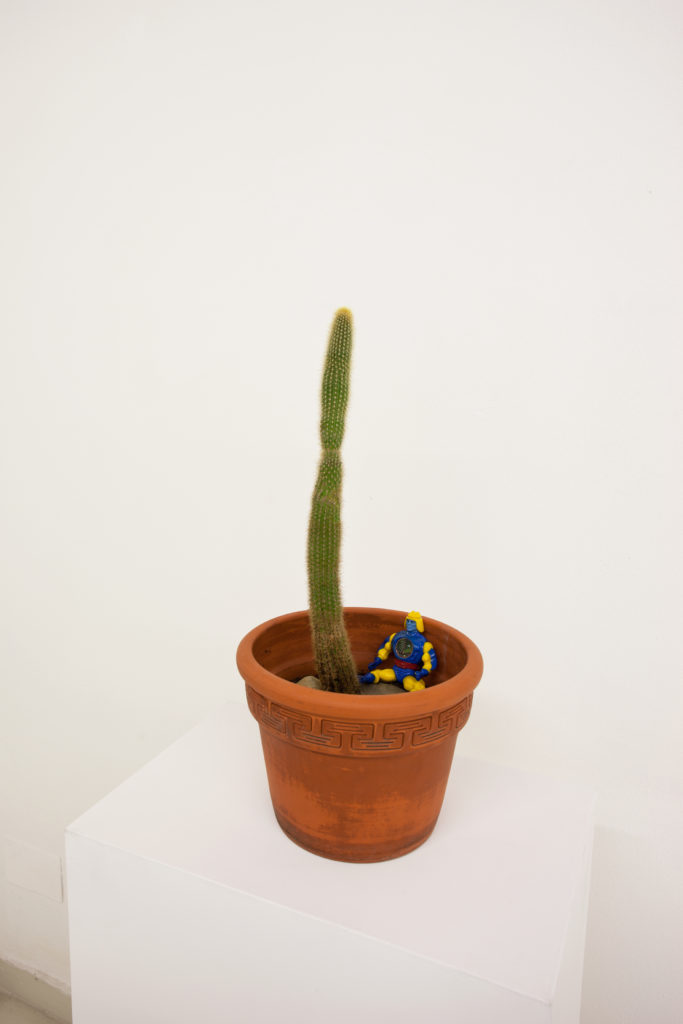Cart Contemporary Art – Monza
20.10.2018 – 30.11.2018








Mi svegliai.
Un coccodrillo era in casa mia. Ne avevo paura.
Apriva la bocca e stava su due piedi, come un uomo.
Si muoveva goffamente. Cercava di avvicinarsi a noi.
Nessuno si fece male, ma continuava, cercando di avvicinarsi.
Ne ero infastidito. Ne avevo paura.
La finestra era aperta, lo spinsi, facendo in modo che sembrasse un incidente.
Spam! Cadde giù sul marciapiede.
Il suo corpo si divise in due parti, ed una luce cominciò a risplendere.
C’era soltanto la sua testa, che divenne piccola, ed uno strano cappello.
Stava volando, e tornò indietro a casa mia.
Ora poteva parlarci. Ma non sapeva che l’avessi spinto io.
L’avevo deturpato.
Aveva pensato, come tutti, che fosse stato un incidente.
Era molto triste. Stava piangendo, ricordando un periodo d’ oro quando il suo corpo era
grande e, muovendosi, poteva esprimerci appieno il suo amore.
* * *
I woke up.
A crocodile was in my house. I feared him.
He was opening his mouth while standing up on his feet, like a human.
He was lumbering. He tried to get close to us.
No one was getting hurt, but still he was trying to come close.
I was annoyed. I feared him.
The window was open, I pushed him, faking an accident.
Splat! He fell down on the sidewalk.
His body broke in two parts, and a light started shining.
There was only his head, which became little, with a strange hat on.
He was flying and came back up to my house.
Now he could talk to us. But he didn’ t know I pushed him.
I had disfigured him.
He thought, like everybody, that it was an accident.
He was extremely sad. He was crying, remembering a golden age when his body was complete
and moving, and he was able to fully express his love to us.
The exhibition Cerco un coccodrillo brings together different positions. Point of intersection is the personal way that each artist has in synthesizing his experience through his work. The figurative language is one of the systems through which individual and collective experiences are integrated. Different levels of reality are being expressed within a dialectical relationship of elements which simultaneously belong to the three spheres of the perceived, the real and the imaginary.
An integral part of the complexity of each artwork is the way in which, and to what extent, it participates in the historical dimension. Inspired by the lived reality,
the artist proceeds to an intuitive mechanism of selection between a continuous fresh flow of raw inputs and sensations transmitted by one sense rather than another. The interest in a series of sensations does not however presuppose its manifestation within the work.
Art is a generator of objects and testifies a particular type of rationality. There is a plastic thinking, just as there is a verbal or mathematical thinking, which does not translate or transpose established models or thoughts previously formulated outside of the plastic thinking itself. Naturally, „just as every man participates in many different levels of civilization, in the same way every object is involved at once in multiple categories of our activities“*.
The text in verses Cerco un coccodrillo constitutes a background story for the exhibition. As an incipit, or as a backwards look, it opens to a diorama of positions.
We do not know the identity of the narrative ego. This sets in motion a possible interest in the identity of the person who has awakened to find himself facing something new, inexplicable, or frightening. The protagonist of the scene could be the visitor in front of the artwork, or the artist himself, through an introspective look, in constant search for a work of art.
Text by Alberto Finelli
* Pierre Francastel, Guardare il teatro (I. Arte e storia. Dimensione e misura delle civiltà), Milano – Udine, MIMESIS EDIZIONI, 2005 – 2012, pp. 38-39